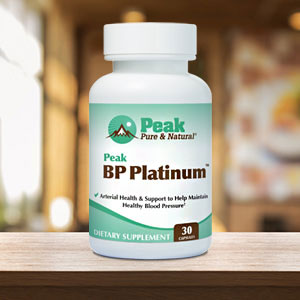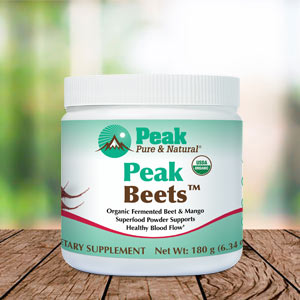Get Easy Health Digest™ in your inbox and don’t miss a thing when you subscribe today. Plus, get the free bonus report, Mother Nature’s Tips, Tricks and Remedies for Cholesterol, Blood Pressure & Blood Sugar as my way of saying welcome to the community!
15+ foods for lower blood pressure

High blood pressure can triple your risk of heart attack, heart failure and stroke.
When it comes to blood pressure control, you’ve probably heard that eating too much sodium will raise your blood pressure levels, and that’s absolutely true. The amount of sodium consumed, mainly in the form of “added” salt, has grown astronomically!
The daily recommendations for sodium are an average of 1.5 mg per day but dietary surveys show the average adult consumes around 3.8 grams — that’s more than double the recommended dose.
Most of this added salt is found in processed and packaged food because natural whole food sources contain only small amounts of naturally occurring sodium.
While watching your salt intake is a great idea, there is one lesser-known nutrient that helps control blood pressure too…
Potassium
When researchers looked at data from 17,000 adults they noticed that those who had lower blood pressure had a higher potassium intake. Since then several clinical trials have shown that increasing potassium does in fact lower blood pressure.
But rather than using potassium supplements, increasing potassium by way of your diet has a much greater blood pressure-lowering effect.
Even a small increase of around 250 mg per day in potassium may lower blood pressure by 2 to 3 mmHg. In those that already have high blood pressure, the results may be as much as 7.2 mmHg systolic and 2.8 mmHg diastolic.
The recommended daily intake of potassium is 4,700 mg per day. Dietary surveys show adults are only consuming around 2,300 to 3,100 mg per day. That’s a 1,600 to 2,400 mg per day deficit!
And this is going to be particularly problematic if you’re consuming lots of sodium…
You see, sodium and potassium work in harmony to control nerve impulses, muscle contraction, and heart function.
So one of the best things you can do is eat more vegetables and fruits because that’s where you’ll find high amounts of potassium.
One cup of cooked beet greens contains a whopping 1,309 mg of potassium — that’s over one-quarter of your daily intake!
Avocado contains almost 1000 mg of potassium per avocado — another big dose in one hit!
Other potent potassium food sources include:
- One medium banana — 422 mg potassium
- One medium baked potato with skin — 926 mg
- Six ounces of prune juice — 528 mg
- One medium orange — 237 mg
- Six ounces of tomato juice — 417 mg
- One cup acorn squash — 896 mg
- One cup Swiss chard — 961 mg
- One cup spinach — 839 mg
- One sweet potato — 839 mg
- Half a cup of lima beans — 484 mg
- One-quarter cup sundried tomatoes — 462 mg
- One cup edamame — 676 mg
- One cup artichoke slices — 644 mg
- One cup Chinese cabbage — 631 mg
Your daily intake of vegetables and fruits should be at least 5 servings. But those that eat 8 to 9 servings a day, mostly vegetables, do get the best results. One serving is just half a cup of a vegetable or fruit or one cup of leafy vegetables.
By increasing your potassium intake you’ll also be cutting down on those salt-ridden packaged foods. And together, the decrease in sodium and increase in potassium will help you gain better control of your blood pressure, naturally.
Editor’s note: Have you heard of EDTA chelation therapy? It was developed originally to remove lead and other contaminants, including heavy metals, from the body. Its uses now run the gamut from varicose veins to circulation. Click here to discover Chelation: Natural Miracle for Protecting Your Heart and Enhancing Your Health!
- Potassium — Oregonstate.edu. (2014). Linus Pauling Institute. Retrieved 22 June, 2017
- USDA Food Composition Databases — USDA.gov. (2017). Retrieved 22 June, 2017
- Rysz J, et al. Hypertension – current (natural) strategies to lower blood pressure. — Current Pharmaceutical Design. 2017;23(999).














